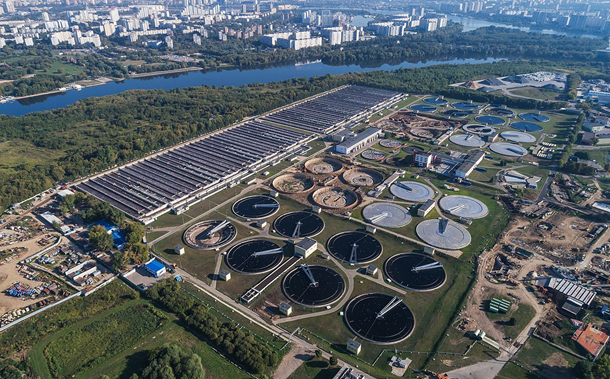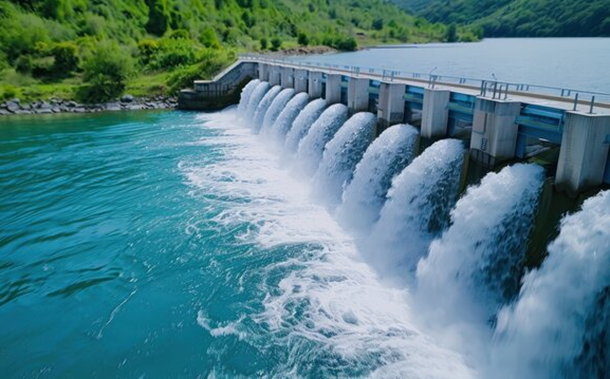Modeling Trip-generation and Distribution using Census, Partially Correct Household Data, and GIS
Downloads
Doi:10.28991/CEJ-2022-08-09-013
Full Text:PDF
Downloads
[2] Hutchinson, B. G. (1974). Principles of urban transport systems planning. Scripta Book Company, Washington, United States.
[3] Papacostas, C. S. (1987). Fundamentals of transportation engineering. Prentice-Hall, Hoboken, United States.
[4] Janssens, D., Wets, G., Brijs, T., & Vanhoof, K. (2004, August). The simulation of activity diary data using sequential probability distributions. Proceedings of the ISCTSC Triennial International Conference on Transport Survey Methods, 1-6 August, 2004, Playa Herradura, Costa Rica.
[5] Janssens, D., Wets, G., Brijs, T., & Vanhoof, K. the Simulation of Activity Diary Data Using Sequential. ISCTC Triniel International Conference on Transport Survey Methods, 32(0), 1–21.
[6] Priyanto, S., & Friandi, E. P. (2010). Analyzing of public transport trip generation in developing countries; a case study in Yogyakarta, Indonesia. International Journal of Civil and Environmental Engineering, 4(6), 167-171.
[7] Bwambale, A., Choudhury, C. F., & Sanko, N. (2019). Car Trip Generation Models in the Developing World: Data Issues and Spatial Transferability. Transportation in Developing Economies, 5(2), 1–15. doi:10.1007/s40890-019-0075-7.
[8] Hu, S. (2010). Modelling trip generation/trip accessibility using logit models. PhD Thesis, Edinburgh Napier University, Edinburg, Scotland.
[9] Bourgeat, P. (2015). A Revealed/stated Preference Approach to Bus Service Configuration. Transportation Research Procedia, 6, 411–423. doi:10.1016/j.trpro.2015.03.031.
[10] Yue, X., Yang, X., Song, D., & Yuan, Y. (2022). The interaction effect of severe weather and non-weather factors on freeway travel volume. Science of the total environment, 808, 152057. doi:10.1016/j.scitotenv.2021.152057.
[11] Chmelík, J. (2015). Assessments of modal split in long-distance passenger transport. Review of Economic Perspectives, 15(1), 49–69. doi:10.1515/revecp-2015-0011.
[12] Hussein, R., Madar-Vani, G., & Maoh, H. (2021). A Comparison of Micro-and Zone-based Trip Generation Models with an Application to London, Ontario (No. TRBAM-21-01811). Transportation Research Board 100th Annual Meeting, January, 2021, Washington, United States.
[13] Mozolin, M., Thill, J. C., & Lynn Usery, E. (2000). Trip distribution forecasting with multilayer perceptron neural networks: A critical evaluation. Transportation Research Part B: Methodological, 34(1), 53–73. doi:10.1016/S0191-2615(99)00014-4.
[14] Jin, T. G., Saito, M., & Schultz, G. G. (2012). Development of a Statewide Commodity Flow Distribution Model Using Composite Friction Factors. Procedia - Social and Behavioral Sciences, 43, 406–417. doi:10.1016/j.sbspro.2012.04.114.
[15] Bruton, M. J. (2021). Introduction to Transportation Planning. Routledge, London, United Kingdom. doi:10.4324/9781003155690.
[16] Hill, D. M., & Dodd, N. (1966). Studies of trends of travel between 1954 and 1964 in a large metropolitan area. Highway Research Record, (141), Washington, United States.
[17] Domencich, T. A., Kraft, G., & Valette, J. P. (1968). Estimation of urban passenger travel behavior: An economic demand model. Charles River Associates, 64-78, Cambridge, United States.
[18] Wilson, A. (2013). Entropy in Urban and Regional Modelling. Routledge, London, United Kingdom. doi:10.4324/9780203142608.
[19] Thamizharasan, V., & Rengaraju, V. R. (1986). Methodology of Approach for Intercity Travel Demand Modelling. Indian Highways, 14(12), 23–33.
[20] Chari, S.R., Chandrasekhar, B.P., & Anjaneyalu, M.V.L.R. (1987). Experiences in the calibration of trip distribution model for HUDA area. Proceedings of 1987 Workshop on Transportation Research, Indian Institute of Management Ahmedabad, India.
[21] Ramamoorthy, N.V., (1986). Hyderabad Area Transportation Study (HATS). A Report on Zonal Trip Attraction Models for HATS Project. Hyderabad, India.
[22] Sarna, A., Prakash, A., Mukhopadhaya, D., Bhatia, N., & Suthar, H. H. (1992). Planning of Mass Rapid Transit System- a case study of Delhi. Journal of the Indian Roads Congress, 53(3), 553-588.
[23] Bjorketun, U. (1970). Traffic assignment in a GIS environment. WIT Transactions on the Built Environment, 26. doi:10.2495/UT960061.
[24] Varagouli, E. G., Simos, T. E., & Xeidakis, G. S. (2005). Fitting a multiple regression line to travel demand forecasting: The case of the prefecture of Xanthi, Northern Greece. Mathematical and Computer Modelling, 42(7–8), 817–836. doi:10.1016/j.mcm.2005.09.010.
[25] Kitamura, R. (2009). A dynamic model system of household car ownership, trip generation, and modal split: Model development and simulation experiment. Transportation, 36(6), 711–732. doi:10.1007/s11116-009-9241-9.
[26] Sofia, G. G., Ali, A. H. A., & Al-Zubaidy, H. A. (2012). Trip generation modeling for selected zone in Al-Diwaniyah city. Journal of Engineering and Sustainable Development, 16(4), 167-180.
[27] Mustafa, R., & Zhong, M. (2011). Applying GIS-Based Traditional Travel Demand Model for Improved Network-Wide Traffic Estimation: New Brunswick Case Study. ICTIS 2011. doi:10.1061/41177(415)103.
[28] Semeida, A. M. (2014). Derivation of travel demand forecasting models for low population areas: the case of Port Said Governorate, North East Egypt. Journal of Traffic and Transportation Engineering (English Edition), 1(3), 196–208. doi:10.1016/S2095-7564(15)30103-3.
[29] Chang, J. S., Jung, D., Kim, J., & Kang, T. (2014). Comparative analysis of trip generation models: Results using home-based work trips in the Seoul metropolitan area. Transportation Letters, 6(2), 78–88. doi:10.1179/1942787514Y.0000000011.
[30] Urade, S., Khode, B., & Sujesh Ghodmare, P. (2017). Analysis of Trip Generation Using Land Use Pattern. International Journal of Scientific Engineering and Applied Science (IJSEAS), 3(4), 120–131.
[31] Mamei, M., Bicocchi, N., Lippi, M., Mariani, S., & Zambonelli, F. (2019). Evaluating origin–destination matrices obtained from CDR data. Sensors (Switzerland), 19(20), 4470. doi:10.3390/s19204470.
[32] Cordera, R., Sañudo, R., dell'Olio, L., & Ibeas, í. (2018). Trip distribution model for regional railway services considering spatial effects between stations. Transport Policy, 67, 77–84. doi:10.1016/j.tranpol.2018.01.016.
[33] Calvo, F., Eboli, L., Forciniti, C., & Mazzulla, G. (2019). Factors influencing trip generation on metro system in Madrid (Spain). Transportation Research Part D: Transport and Environment, 67, 156–172. doi:10.1016/j.trd.2018.11.021.
[34] Doustmohammadi, M., Anderson, M., & Doustmohammadi, E. (2019). Regression Analysis to Create New Truck Trip Generation Equations for Medium Sized Communities. Current Urban Studies, 07(03), 480–491. doi:10.4236/cus.2019.73024.
[35] Soares Machado, C. A., & Quintanilha, J. A. (2019). Identification of trip generators using remote sensing and geographic information system. Transportation Research Interdisciplinary Perspectives, 3, 100069. doi:10.1016/j.trip.2019.100069.
[36] Yang, F., Li, L., Ding, F., Tan, H., & Ran, B. (2020). A data-driven approach to trip generation modeling for urban residents and non-local travelers. Sustainability (Switzerland), 12(18), 7688. doi:10.3390/su12187688.
[37] Aboelenen, K. E., Mohammad, A. N., Elgaar, M. I., & Choe, P. (2021). Trip Generation Rates Using Household Surveys in the State of Qatar. Journal of Traffic and Logistics Engineering, 9(1), 10–19. doi:10.18178/jtle.9.1.10-19.
[38] Gebre, G., & Quezon, E. T. (2021). Modeling Public Transport Users' Trip Production in Hawassa City, Ethiopia. Journal of Civil Engineering, Science and Technology, 12(2), 75–90. doi:10.33736/jcest.3972.2021.
[39] Mohd Shafie, S. A., Leong, L. V., & Mohd Sadullah, A. F. (2021). A trip generation model for a petrol station with a convenience store and a fast-food restaurant. Sustainability (Switzerland), 13(22), 12815. doi:10.3390/su132212815.
[40] Wikipedia (2022). Location of Punjab in India. Available online: https://en.wikipedia.org/wiki/Punjab,_India#/media/File:IN-PB.svg (Accessed on August 2022).
[41] Wikipedia (2022). Map. Available online: https://en.wikipedia.org/wiki/Amritsar#/map/0 (Accessed on August 2022).
[42] Consulting Engineering Services (India) Private Limited in Association with SYSTRA MVA Consulting (2012). Comprehensive Mobility Plan for Various Cities of Punjab State (Package-1): Amritsar City. Draft Final Report Document No. 2010112, March 2012, Punjab Municipal Infrastructure Development Company, Department of Local Government of Punjab, Punjab, India.
[43] Google.maps (2022). Amritsar. Available online: https://www.google.co.in/maps/place/Amritsar,+Punjab/@31.633 6712,74.8000796,12z/data=!3m1!4b1!4m5!3m4!1s0x391964aa569e7355:0xeea2605bee84ef7d!8m2!3d31.6339793!4d74.8722642 (Accessed on August 2022).
[44] Municipal Corporation Amritsar (2022). Amritsar Municipal ward Boundary. Available online: http://www.amritsarcorp.com/ WardWise.jpg (Accessed on August 2022).
[45] Voorhees, A. M. (2013). A general theory of traffic movement. Institute of Traffic Engineers, New Haven, Connecticut. doi:10.1007/s11116-013-9487-0.
[46] Census (2014). Census of India 2011 - Punjab - Series 04 - Part XII A - District Census Handbook, Amritsar. Ministry of home Affairs, New Delhi, India. Available online: https://censusindia.gov.in/nada/index.php/catalog/982 (Accessed on August 2022).
[47] Census (2014). Census of India 2011 - Punjab - Series 04 - Part XIIB - District Census Handbook, Amritsar. Ministry of home Affairs, New Delhi, India. Available online: https://censusindia.gov.in/nada/index.php/catalog/1017 (Accessed on May 2022).
[48] Kanthi, R. V. (2012). Multinomial Logit and Nested Logit Models for Integrated Studies on Vehicle ownership and Mode choice for Amritsar City using BIOGEME and NLOGIT based RP data. Master Thesis, Department of Civil Engineering, National Institute of Technology Karnataka, Karnataka, India.
[49] Bureau of Public Roads. (1963). Calibrating and Testing the Gravity Model for Any Sized Urban Area. U.S. Department of Commerce, Bureau of Public Roads, Office of Planning, Washington, United States.
[50] Bureau of Public Roads (1954). Conducting a Home Interview Origin-Destination Survey. Procedure Manual 2B, Public Administration Service, Chicago, United States.
[51] Kadiyali, L. R. (2013). Traffic Engineering and Transport Planning. Khanna publishers, New Delhi, India.
[52] Mir, I. S., Cheema, P. P. S., & Singh, S. P. (2021). Implementation analysis of solid waste management in Ludhiana city of Punjab. Environmental Challenges, 2, 100023. doi:10.1016/j.envc.2021.100023.
[53] ADA. (2022). Amritsar Development Authority. Available online: https://www.adaamritsar.gov.in/en (accessed on June 2022).
[54] Lafta, S. A., & Ismael, M. Q. (2022). Trip generation modeling for a selected sector in Baghdad city using the artificial neural network. Journal of Intelligent Systems, 31(1), 356–369. doi:10.1515/jisys-2022-0023.
[55] NovaÄko, L., Š imunović, L., & Krasić, D. (2014). Estimation of Origin-Destination Trip Matrices for Small Cities. Promet- Traffico, 26(5), 419–428. doi:10.7307/ptt.v26i5.1501.
[56] DMRB (1996). Traffic Appraisal of Road Schemes. Design Manual for Roads and Bridges, 12(2), UK Highways Agency, May, London, United Kingdom.
[57] Wisconsin Department of Transportation. (2022). Model Calibration, The GEH formula, Wisconsin DOT Micro-simulation Guidelines. Wisconsin, United States. Available online: http://www.wisdot.info/microsimulation/index.php?title=Model_ Calibration#The_GEH_Formula (Accessed on August 2022).
[58] Smith, J., & Blewitt, R. (2010). Traffic modelling guidelines: TFL traffic manager and network performance best practice, version 3.0. Transport for London, London, United Kingdom.
[59] Zhou, Y., Shen, X., & Jin, S. (2019). A Geographically and Temporally Weighted Regression Model to Explore the Spatiotemporal Influence of Built Environment on Trip Distribution: A Case Study in Hangzhou. CICTP 2019. doi:10.1061/9780784482292.407.
[60] Merrett, T.H., & Khalife, B. (1993). Geographical Information Systems Development Using a General-Purpose Database Programming Language. GIS: Technology and Applications, Proc. of the Far East Workshop on Geographic Information Systems, 21-22 June 1993. 121-138.
- Authors retain all copyrights. It is noticeable that authors will not be forced to sign any copyright transfer agreements.
- This work (including HTML and PDF Files) is licensed under a Creative Commons Attribution 4.0 International License.![]()














